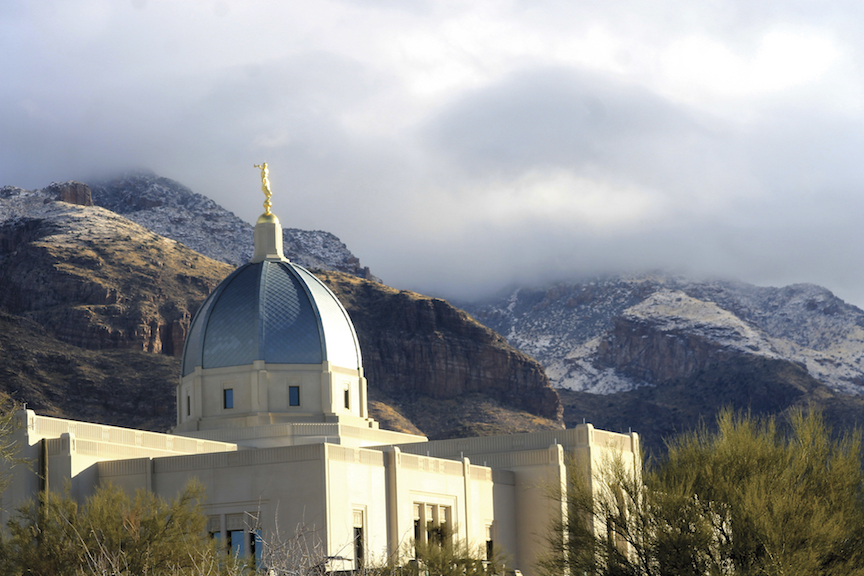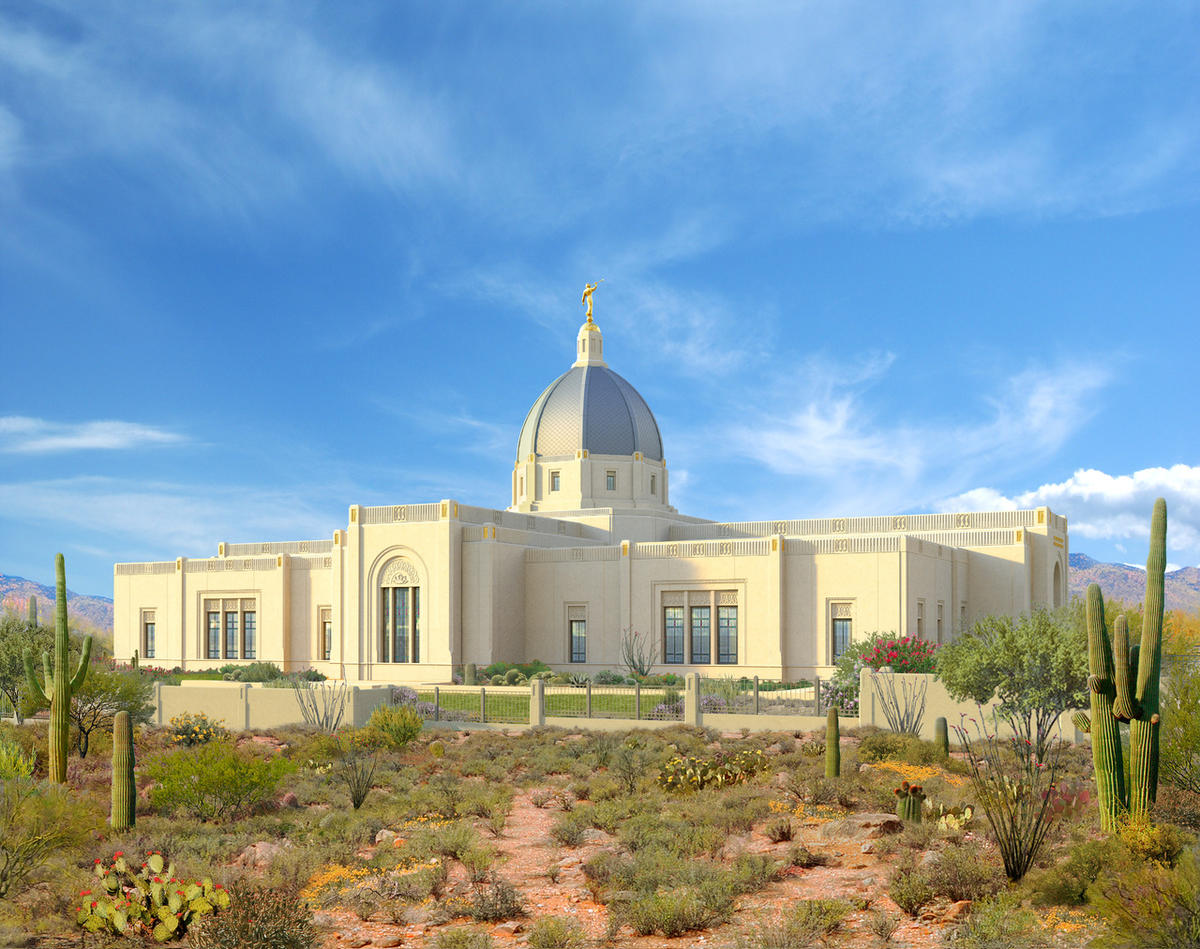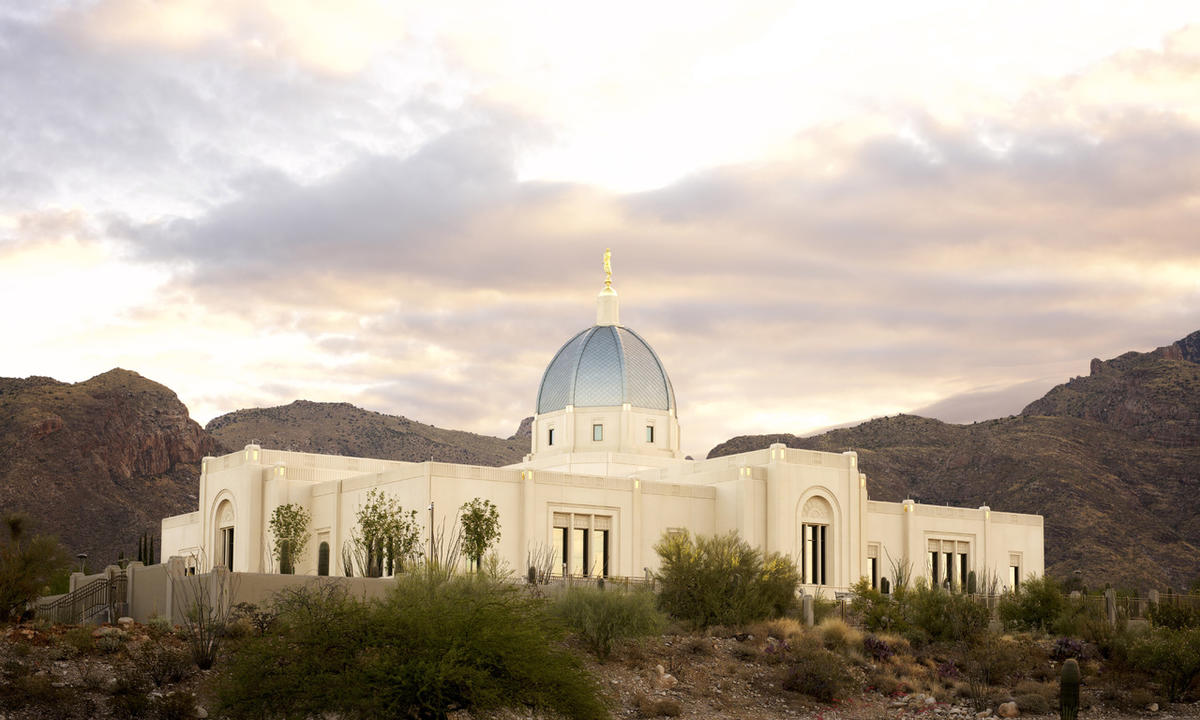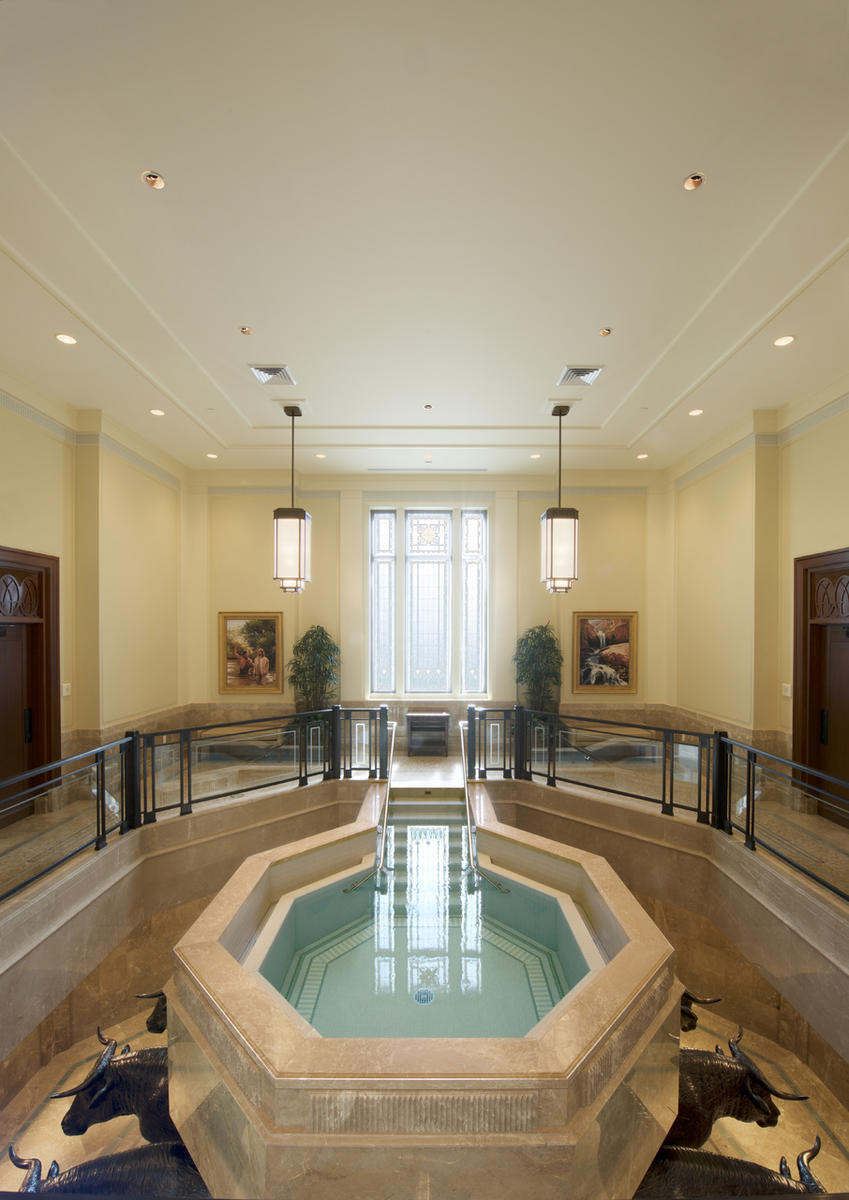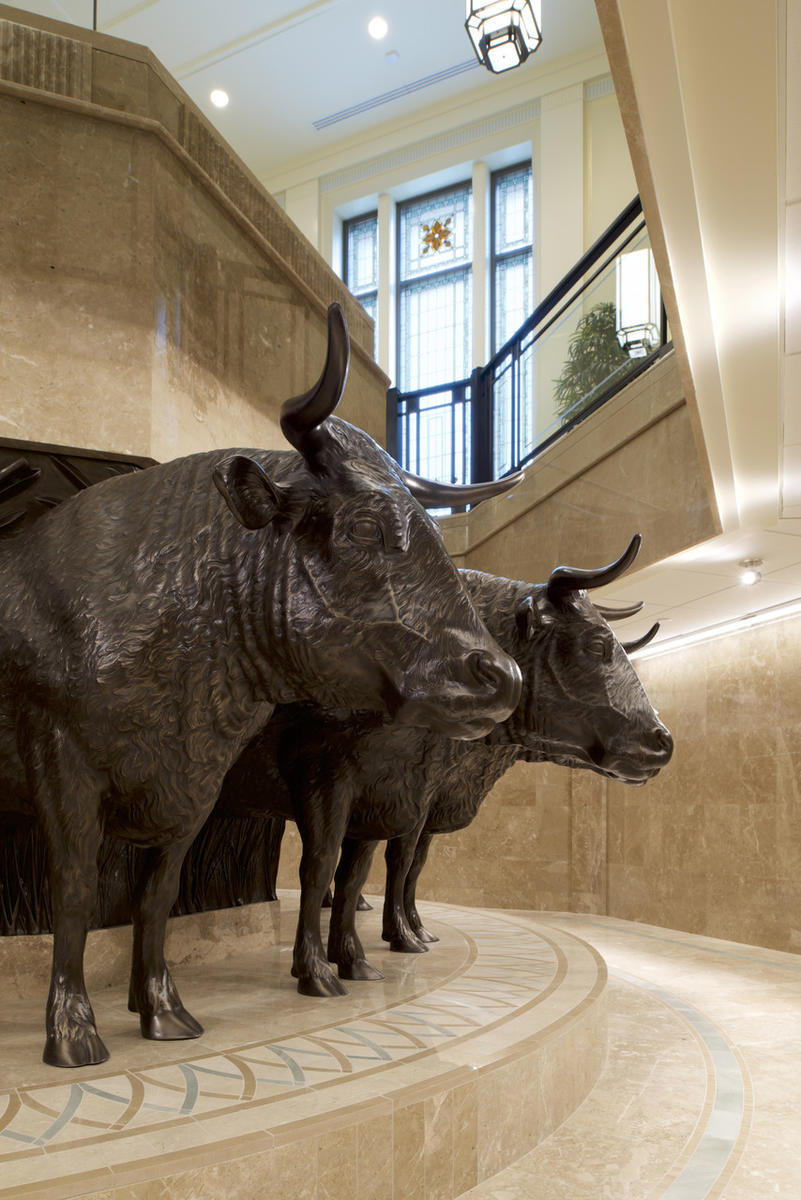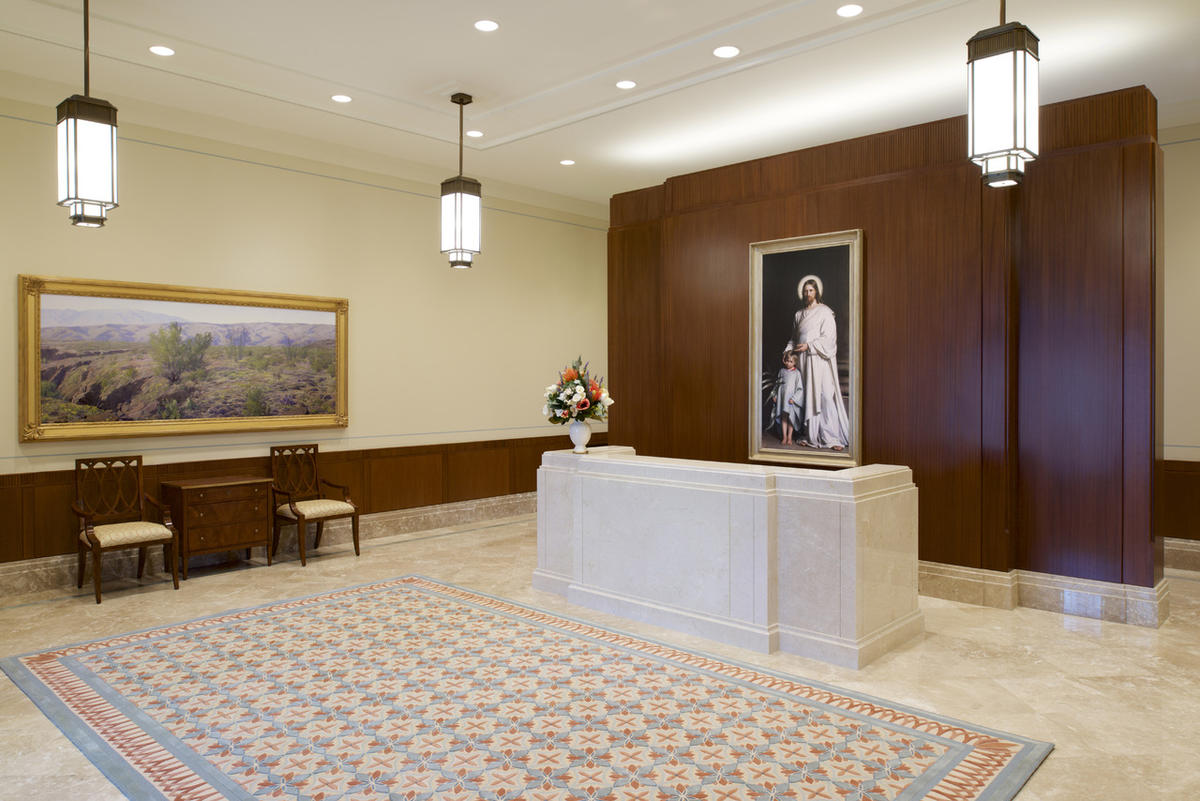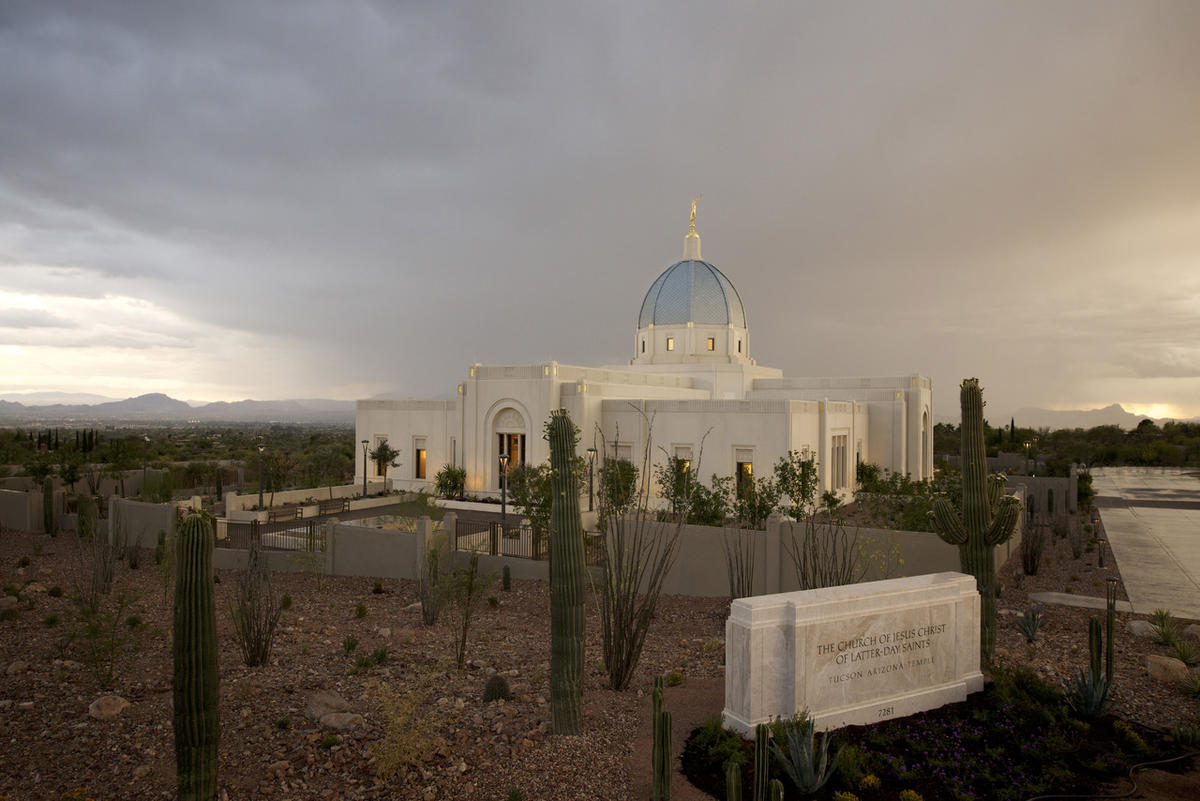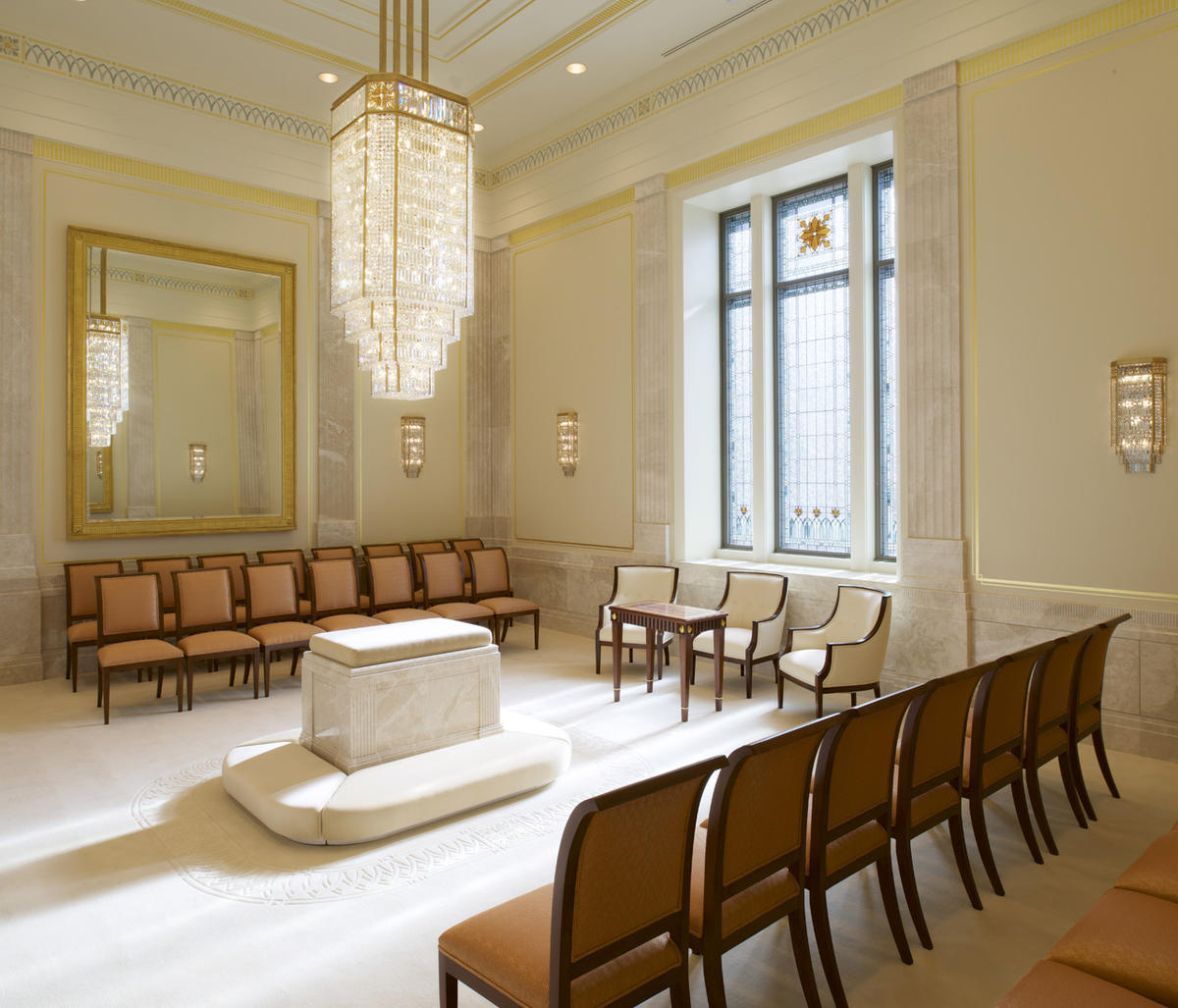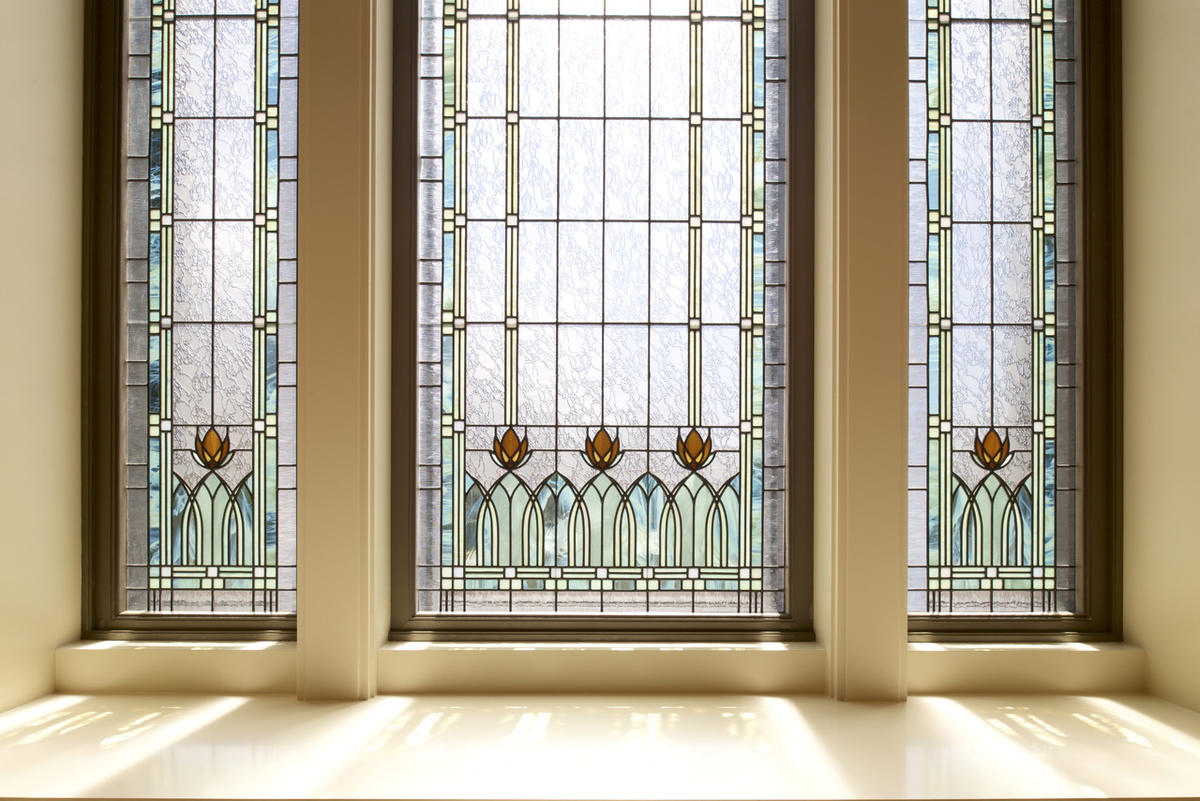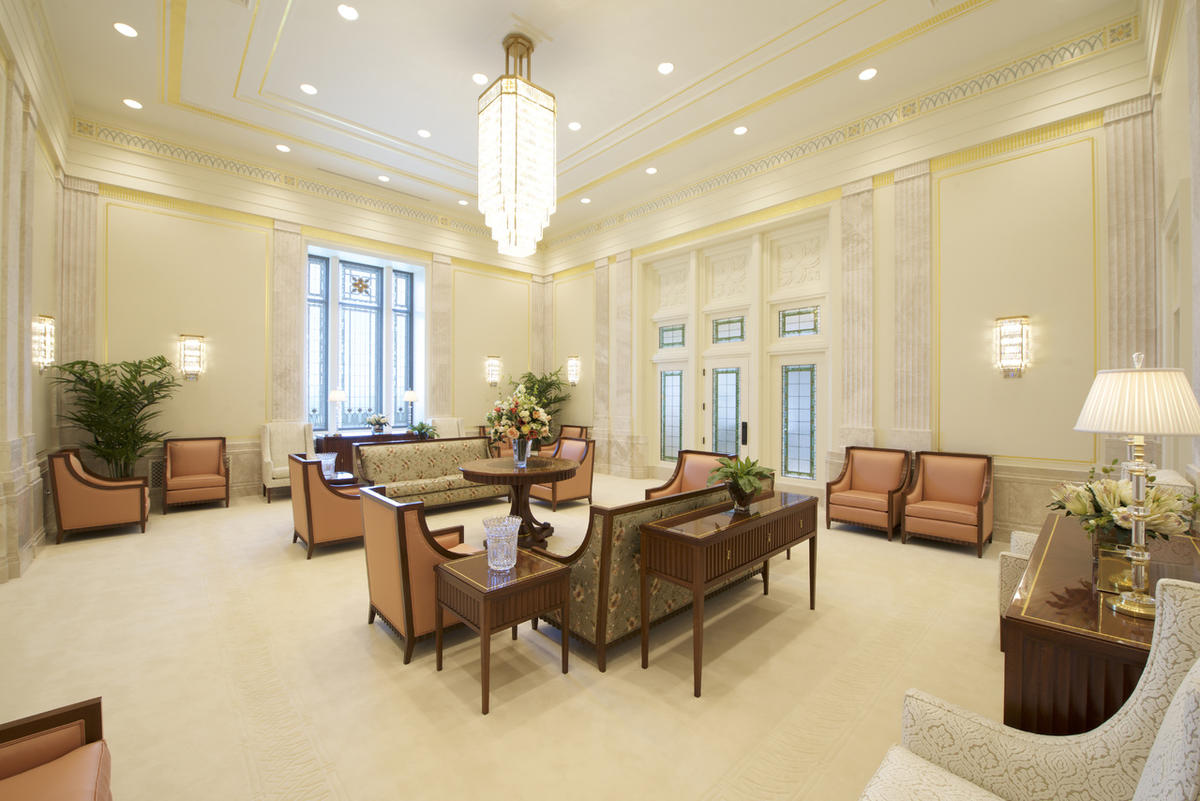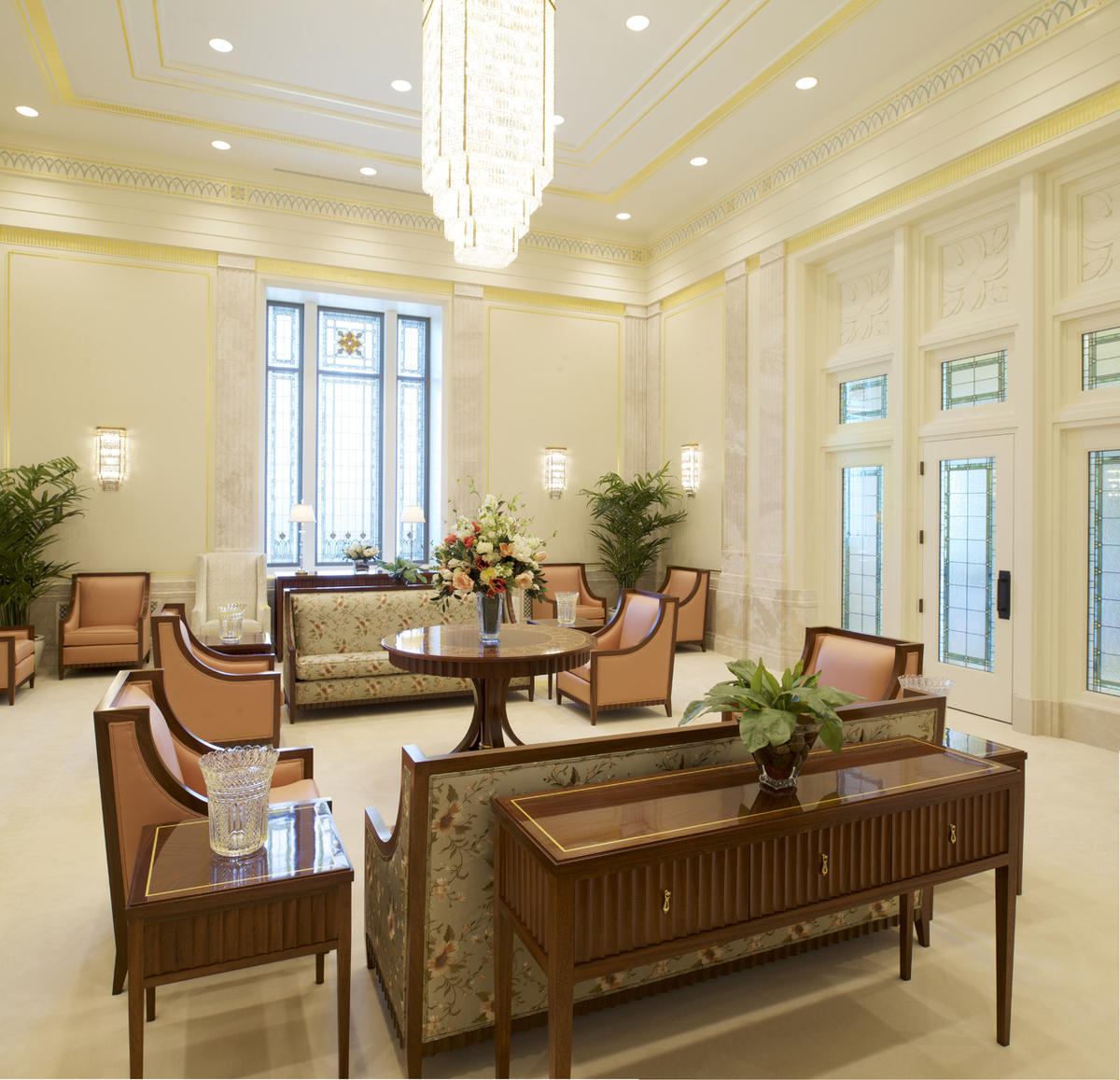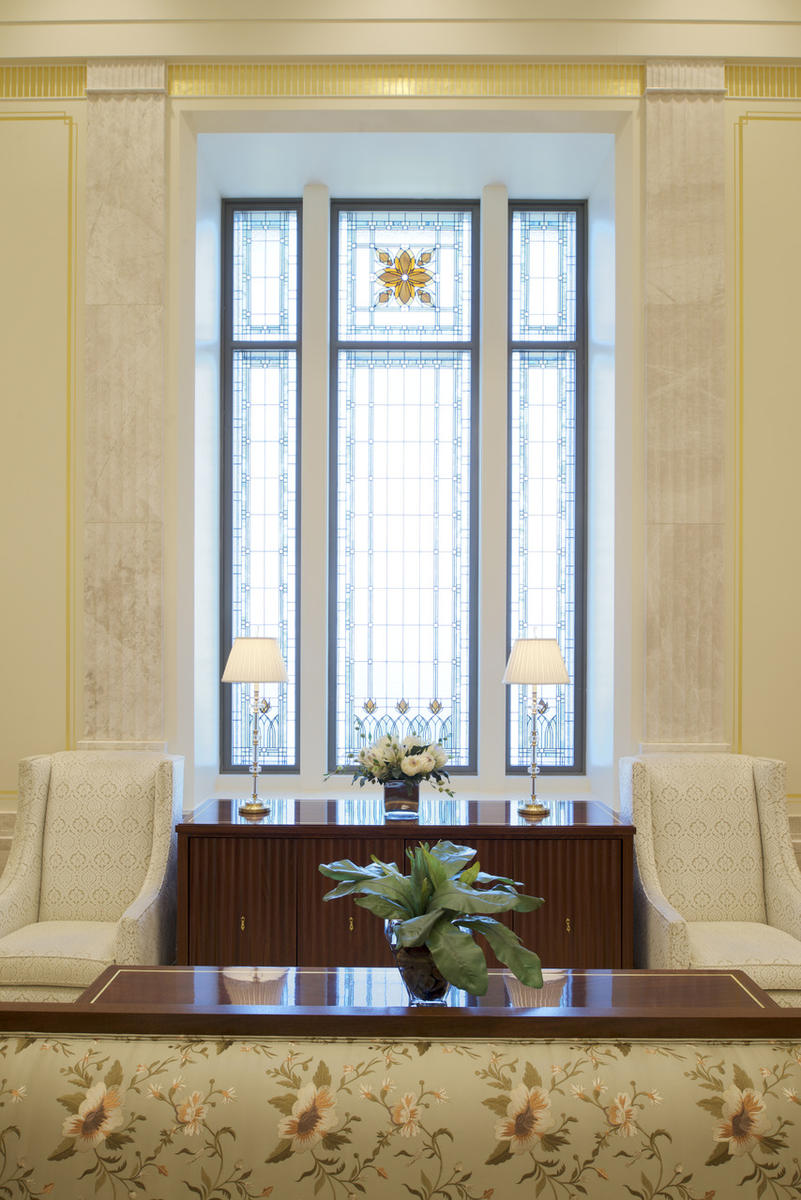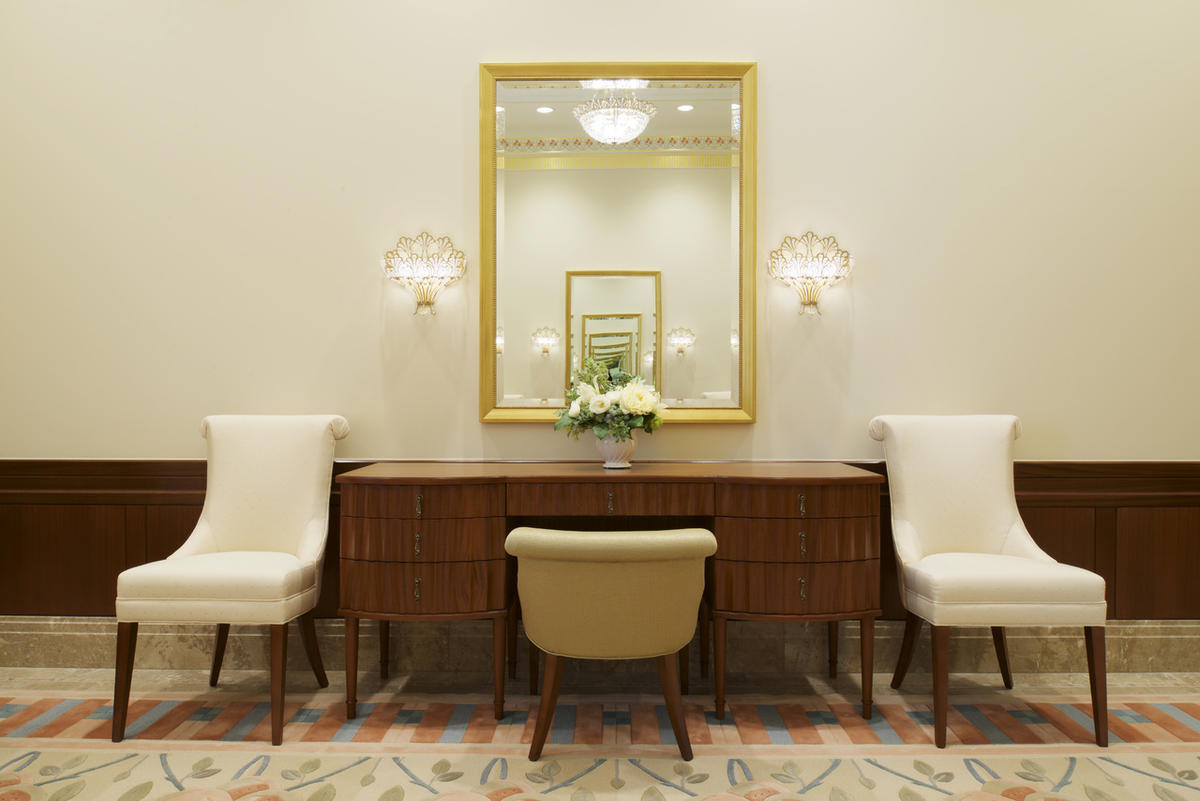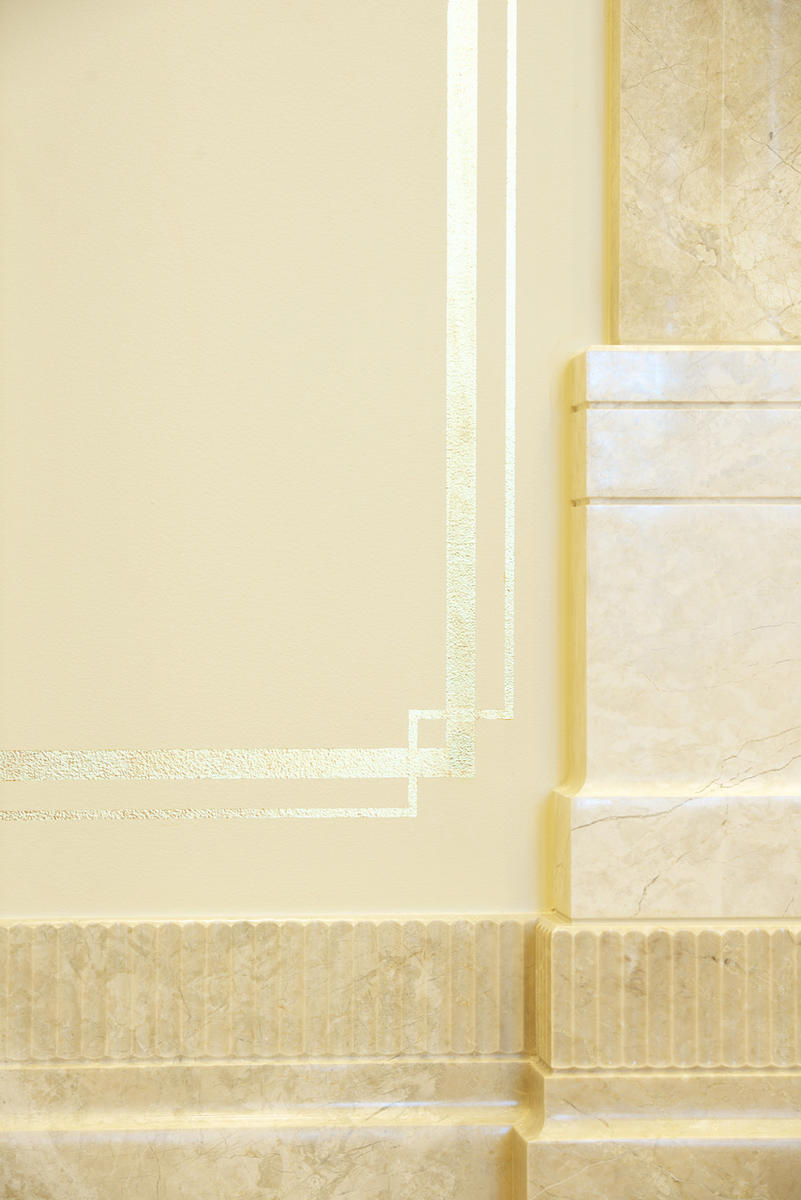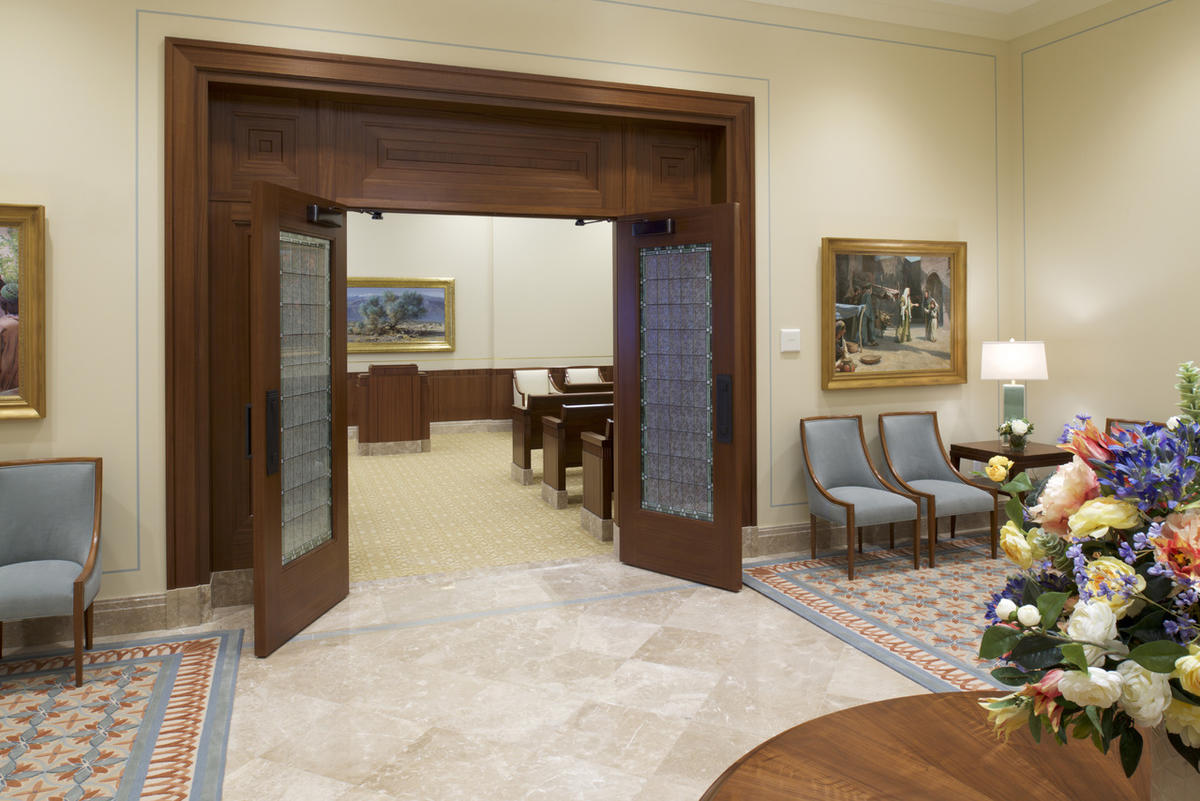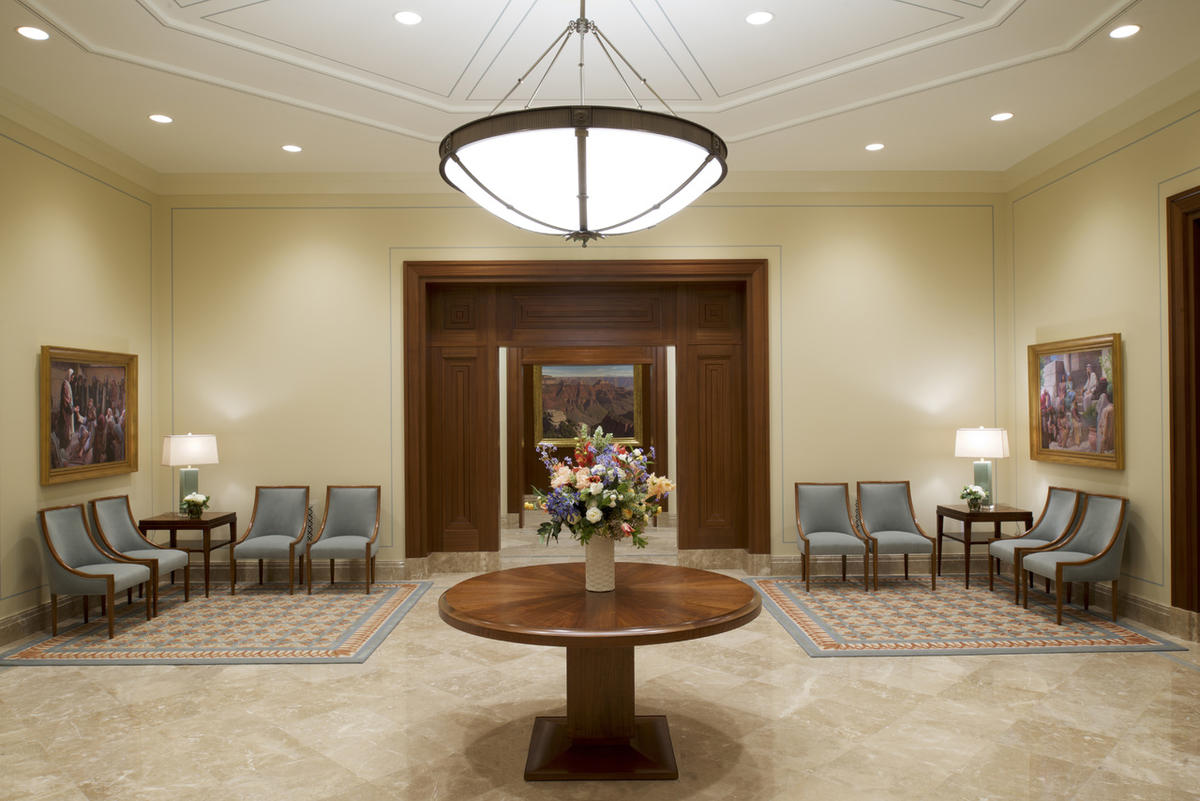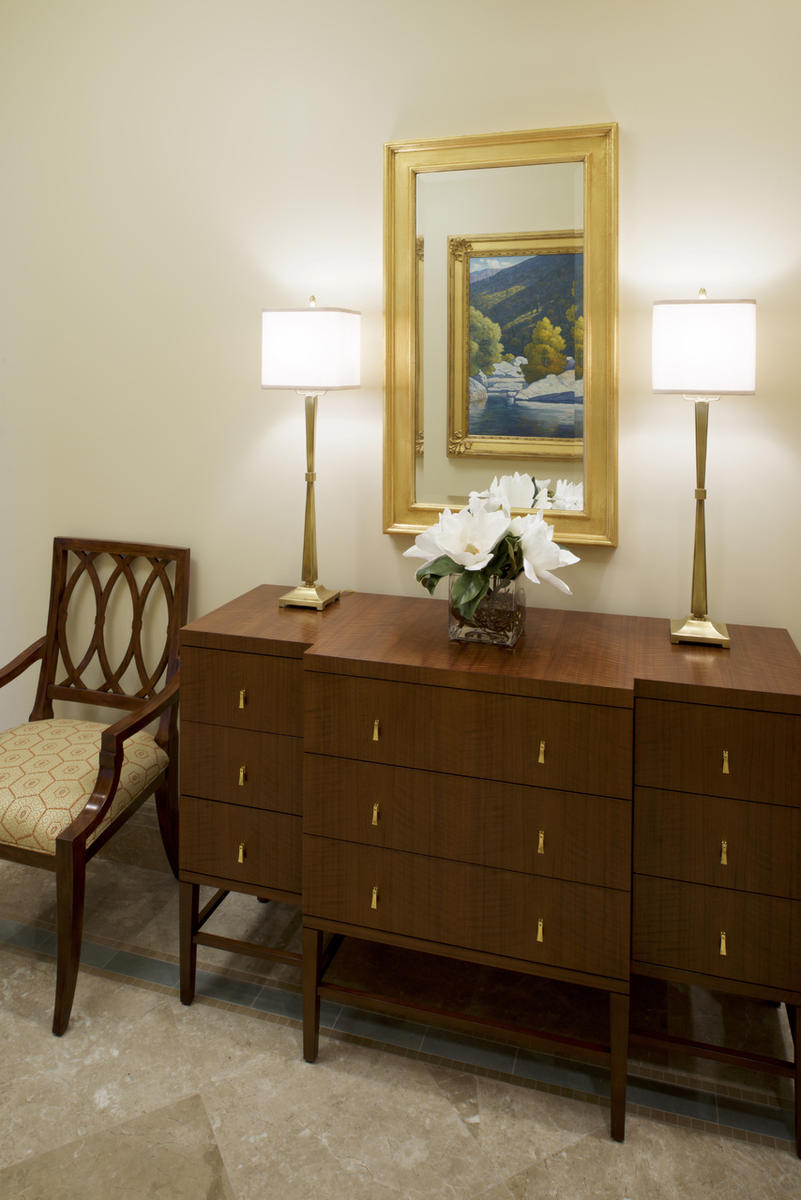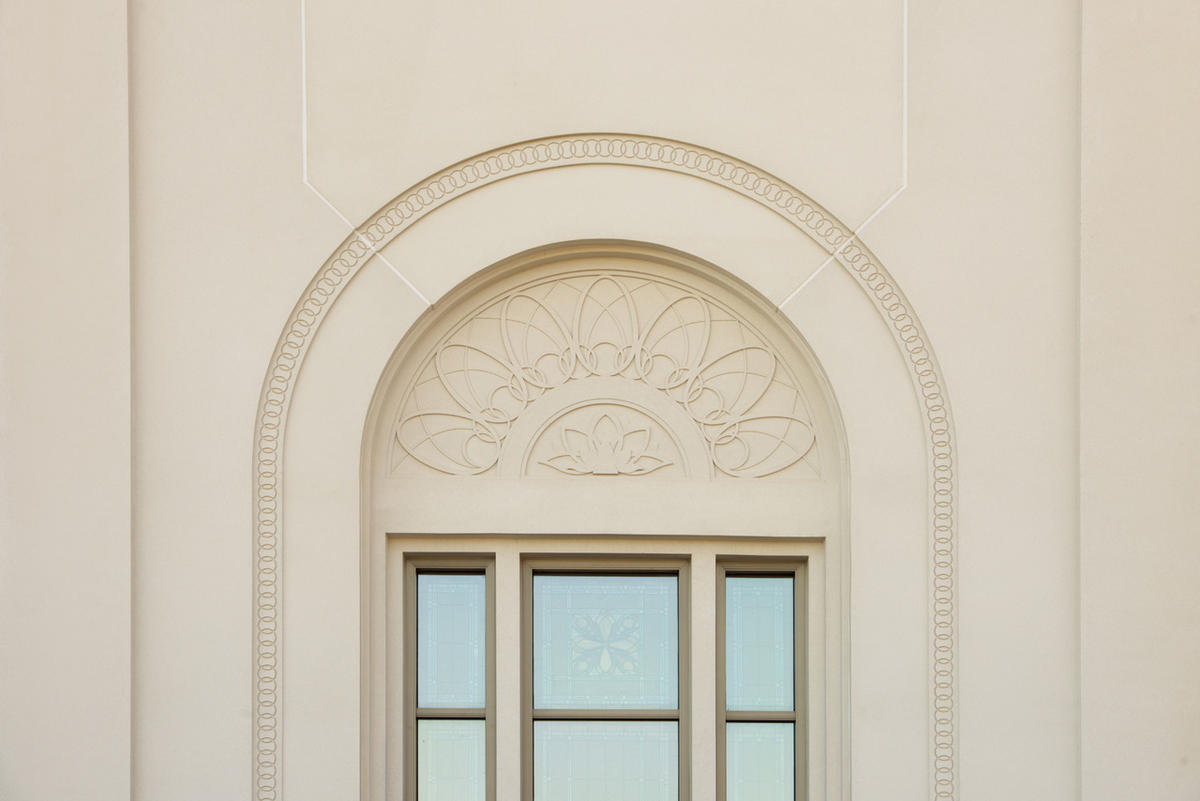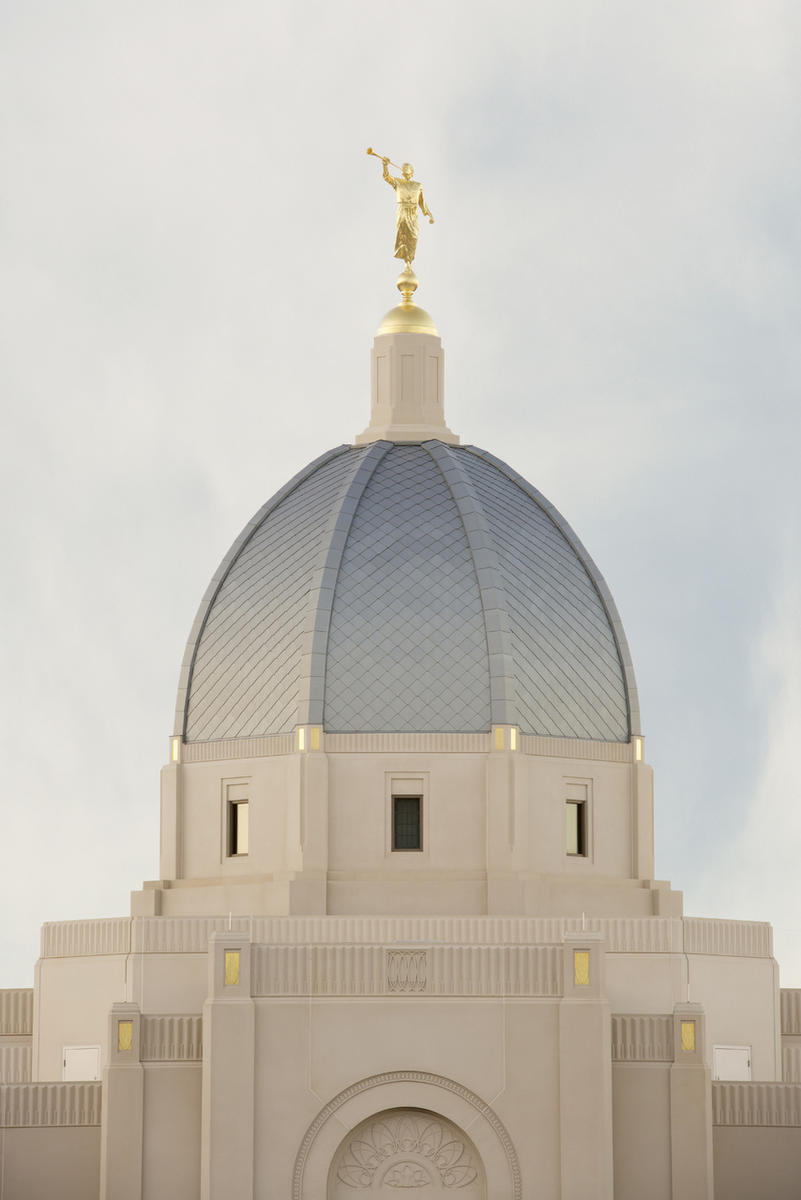Tucson Arizona Temple
On 6 October 2012, during the Saturday morning session of the 182nd Semiannual General Conference of The Church of Jesus Christ of Latter-day Saints, President Thomas S. Monson announced plans for a temple to be built in Tucson, Arizona—Arizona's second largest city.
The Tucson Arizona Temple is the sixth Latter-day Saint temple in Arizona (known as the Grand Canyon State), the home of approximately 440,000 Latter-day Saints, meeting in over 900 congregations. The other temples in Arizona are the Mesa Arizona Temple (1927), Snowflake Arizona Temple (2002), The Gila Valley Arizona Temple (2010), Phoenix Arizona Temple (2014), and Gilbert Arizona Temple (2014). Cactus plants at the Tucson Arizona Temple site were transplanted to an on-site nursery and reintegrated into the final landscaping.
The Tucson Arizona Temple is larger than the Gila Valley temple and smaller than the Phoenix temple. The two-story, 38,000-square-foot mission-style building includes a dome-shaped cupola—a rare element since nearly all other Latter-day Saint temples have one or more towers, steeples, or spires.
The Tucson Arizona Temple sits on a seven-acre site at the base of the Catalina Mountains in Pima County, just beyond the city's northern boundaries. As such, it falls under zoning ordinances and codes of Pima County, rather than of Tucson proper.[1]
A dome is a new feature to Latter-day Saint temples, but it fit "perfectly in the constraints of what had been established for the county here,” said Elder Larry Y. Wilson, a General Authority Seventy with the Church of Jesus Christ and executive director of the Church’s Temple Department. “It enabled us to do something that didn’t require obtaining a variance and captured beautifully the architectural character of the Tucson area.”[2]
The dome is constructed of imported tile from Germany topped with an angel Moroni statue. The dome design—elongated, octagonal, and ribbed—is similar to Italy’s Il Duomo de Firenze (The Dome of Florence) of that city’s Santa Maria del Fiore Cathedral. The cupola has a taste of Tucson’s own domes as well. The dome design gives nods to the nearby historic San Xavier del Bac Mission—the state’s oldest intact European-style building—as well as the city’s old Pima County Courthouse.
According to Church Newsroom:
- The design and colors inside the new 38,000-square-foot temple are influenced by the Art Deco style and reflect the green desert landscape of the American Southwest, including native plants, red cactus flowers and orange hues that represent the desert sun. Designers used the native ocotillo plant and the flower of the paddle cactus or prickly pear as inspiration for the décor, such as the art glass. Paintings feature stories of the ministry of Jesus Christ from the scriptures and desert scenery.
Local Latter-day Saint, Lucinda Contreras, commented, "The structure itself is totally Southwestern and just is the feel of Tucson. It's the old pueblo. Its unique dome [with] the beautiful blue . . . is representative of the sky and the beautiful colors that we have here in Tucson." Her 15-year-old daughter, Candace Contreras, said, "Now people are wondering what it [the temple] is, and even my friends at school are like, 'Hey, what's that big building with the statue on top? Like what does that mean?' And it gives me an opportunity to share with them what I know to be true and what it means to me."
The temple serves approximately 33,000 members who make up the eight stakes in the Tucson area - from Sierra Vista, Wilcox, Avra Valley, Marana, Oro Valley to Nogales. It is the Church’s 157th dedicated temple worldwide.
The Tucson Arizona Temple is located in the Catalina Foothills where East Ina Road curves into Skyline Drive. The physical address is 7281 North Skyline Drive.
Contents
History of the Church in Tucson, Arizona
Latter-day Saints first entered the area that is now Tucson in the winter of 1846 as part of the Mormon Battalion which was organized to help in the Mexican-American War. The trails they blazed across Arizona had started in Iowa and ended in California and ultimately became the “highways” for people headed west throughout the 1800s. Thirty-three members of the Battalion returned and settled in what is now Arizona. More members of the Church arrived in 1873, having been sent from Utah to establish settlements in Arizona. In 1899, Nephi and Jacob Bingham settled in the Tuscon area near the Rillito River, and they named the colony Binghampton. Gradually, more members of the Church settled in the area, and the first branch in Tucson was formed in 1910. The first stake in the area was formed in 1956.
In 1912, Latter-day Saints who had settled in Mexico also relocated to Arizona, and 15 years later, Arizona’s first temple was dedicated in Mesa. In 1973, Arizona native Spencer W. Kimball became the 12th President of the Church and served until his death in 1985.
Groundbreaking Ceremony
On Saturday, 17 October 2015, President Dieter F. Uchtdorf, Second Counselor in the First Presidency of The Church of Jesus Christ of Latter-day Saints presided at the groundbreaking ceremony for the Tucson Arizona Temple. Services were broadcast live to area meetinghouses in English and in Spanish. Attendance at the ceremonies was by invitation only; however, the general public was invited to view the proceedings live from local meetinghouses.
Open House
The First Presidency of The Church of Jesus Christ of Latter-day Saints announced that a free public open house for the Tucson Arizona Temple would take place beginning Saturday, 3 June 2017, and continue through Saturday, 24 June 2017, except for the Sundays of 4, 11, and 18 June 2017.
A member of the Church, Daniel Post, said, "I believe that when people come to visit the temple, they will feel something special as they visit the House of the Lord, as they come here and view the insides of this beautiful structure." Calvin Caldwell, the project manager for the temple, explained that going to the temple is like finding an oasis in the desert. "They have that opportunity to take a deep breath and relax and all their worries kind of go away,” said Caldwell.
According to news sources, more than 112,000 people visited the temple during its open house.
A Picturesque Tour of the Tucson Arizona Temple
The following pictures ©Intellectual Reserve, Inc., are from Deseret News of the inside of the Tucson Arizona Temple have been published by The Church of Jesus Christ of Latter-day Saints.
Cultural Celebration
The Church live streamed the cultural celebration — a pageant showcasing Tucson history with about 2,100 teens participating — from Kino Sports Park to Latter-day Saint meetinghouses at 7 p.m. on Saturday, 12 August 2017.
Tucson Arizona Temple Dedication
President Dieter F. Uchtdorf, Second Counselor in the First Presidency of The Church of Jesus Christ of Latter-day Saints, dedicated the Tucson Arizona Temple on Sunday, 13 August 2017. There were three dedicatory sessions at 9:00 a.m., 12:00 p.m., and 3:00 p.m. The services were broadcast to members of the Church in Arizona. The three-hour block of meetings was canceled for those congregations to enable members to participate and focus on this sacred event.
The first session included the customary cornerstone ceremony, a ceremonial sealing of the cornerstone with mortar to signal completion of the temple. Stepping outside of the temple with other Church leaders and their wives, President Uchtdorf spoke for several minutes to spectators gathered to watch the ceremony, remarking that "it is a reminder of Who is indeed the Cornerstone of our faith." In his remarks, he said, the temple is "the intersection of terrestrial and celestial bearings, which brings us the harmony of earth and heaven through the House of the Lord." He further commented, "Let us just remember that as we seal this cornerstone, it is also a moment to seal our hearts with the great purpose of our life. The temple is the place to teach the purpose of life. It is the moment where the world around us hopefully will see with us the goodness of the House of the Lord. . . . You are living in an area with wonderful friends, with great people who support the growth of the Church in this beautiful area."
President and Sister Harriet R. Uchtdorf each applied mortar to the cornerstone cover, followed by other Church leaders and their wives and, finally by several children whom President Uchtdorf invited to come forward from among the spectators.
A choir of young single adults selected from throughout the temple district performed expressly for the cornerstone ceremony. Choir member Brittany Butler, Tucson Arizona West Stake, said, "It has been one of the most inspirational and moving experiences of my life. I couldn’t ask for a more spiritual experience. I’ve drawn closer to my Heavenly Father. To be able to work with my peers in a choral setting has given me the opportunity to learn from them and improve my closeness to God and Jesus Christ and to build my testimony through song."
Officiating with President Uchtdorf was Elder Gary E. Stevenson of the Quorum of the Twelve Apostles; Elder Lynn G. Robbins of the Presidency of the Seventy; Elder Benjamín de Hoyos, General Authority Seventy; Elder Kevin R. Duncan, General Authority Seventy; Elder Larry Y. Wilson, General Authority Seventy; and Bishop W. Christopher Waddell, the second counselor in the Presiding Bishopric.
External Links
- Official Tucson Arizona Temple page
- Tucson Arizona Temple page
- Deseret News, "Why the latest Mormon temple design features a dome, not a steeple"
- Tucson Arizona Temple Dedicatory Prayer
- FamilySearch RootsTech, Temple Invitation by Russell M. Nelson
Temples in Arizona
- Gilbert Arizona Temple
- Mesa Arizona Temple
- Phoenix Arizona Temple
- Snowflake Arizona Temple
- The Gila Valley Arizona Temple
- Tucson Arizona Temple
- Yuma Arizona Temple
